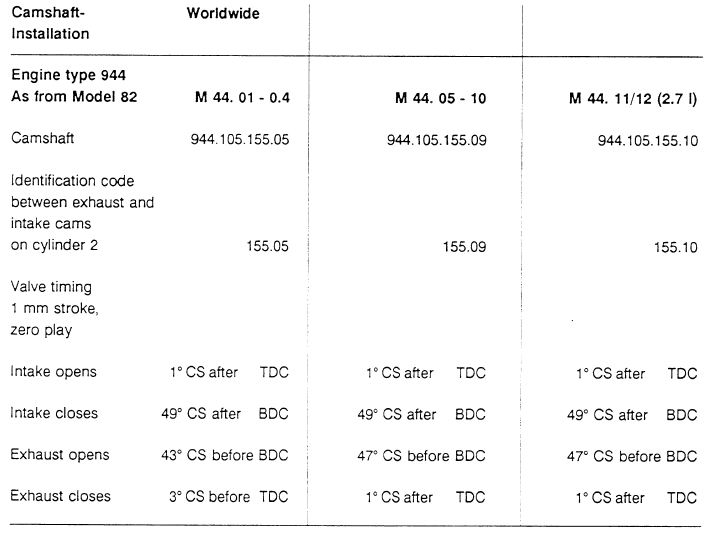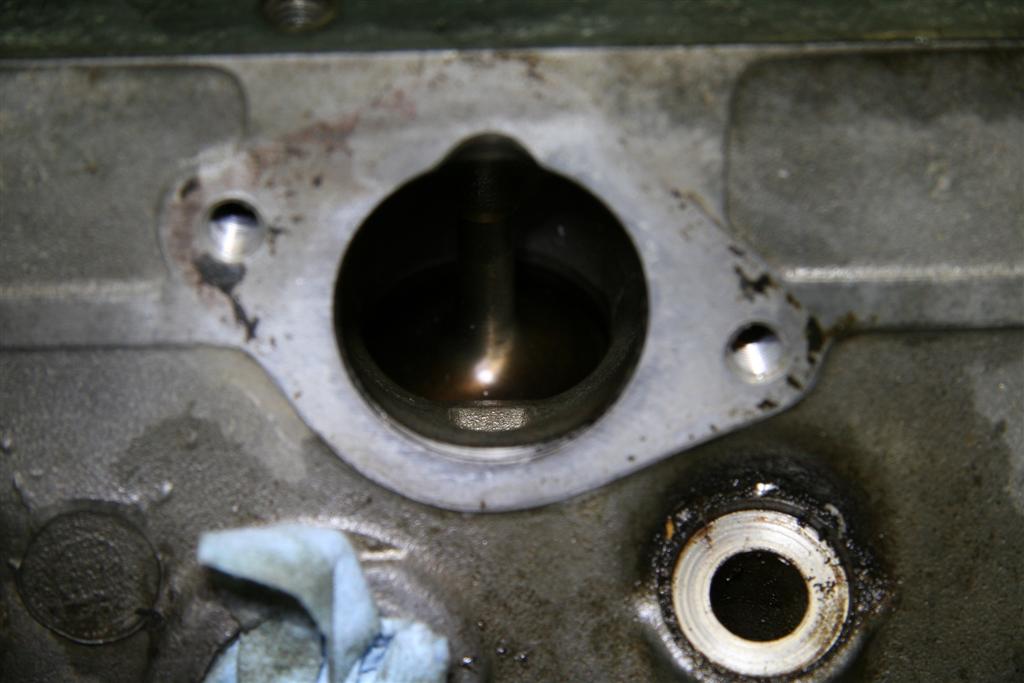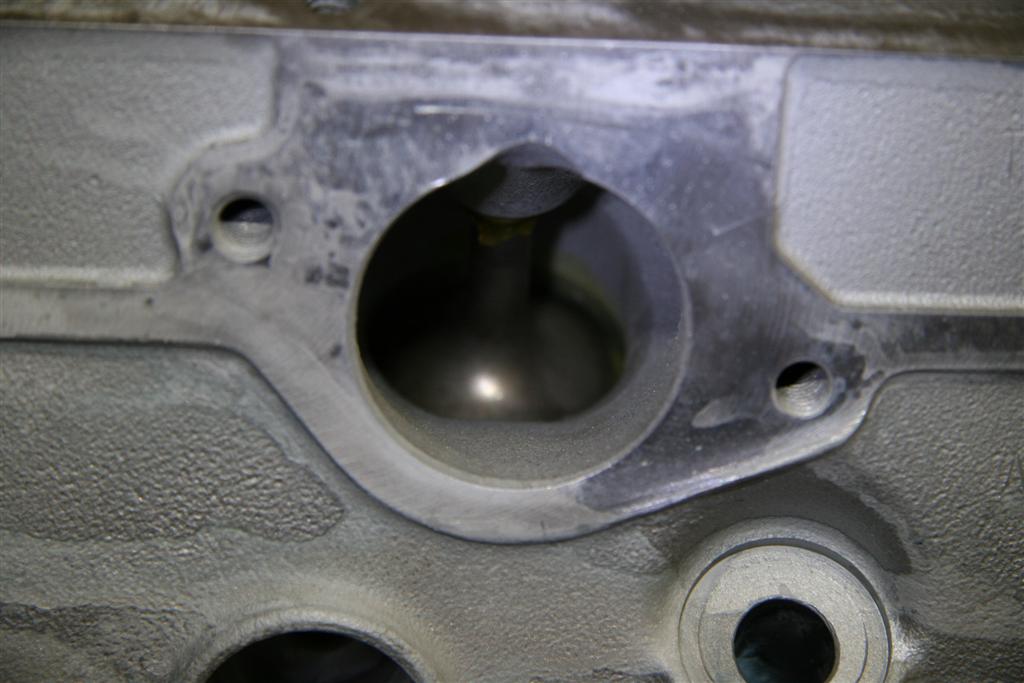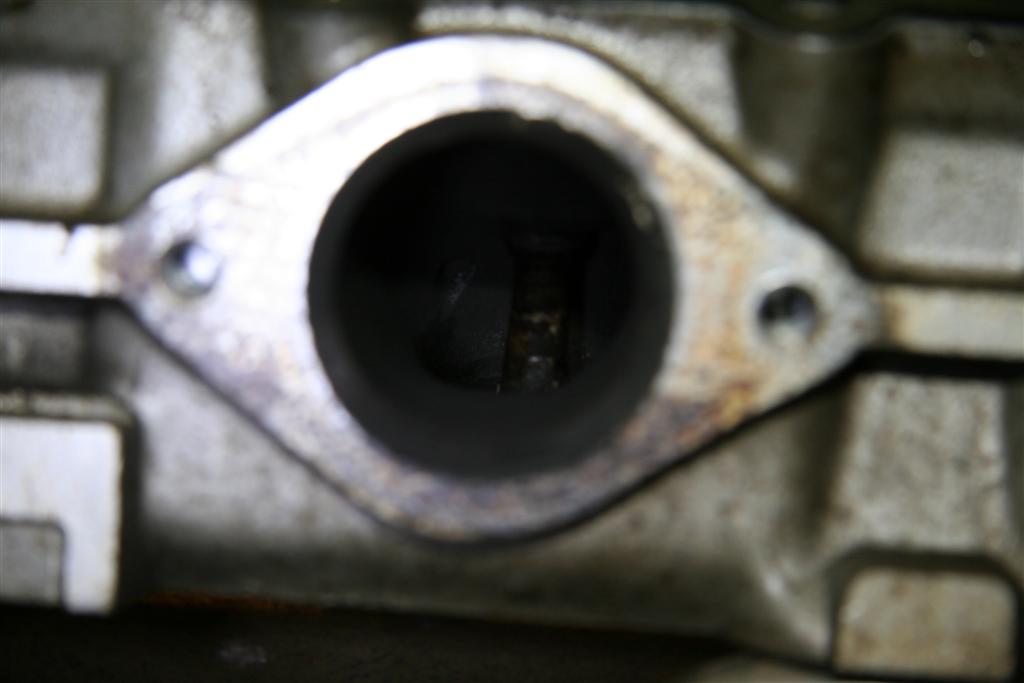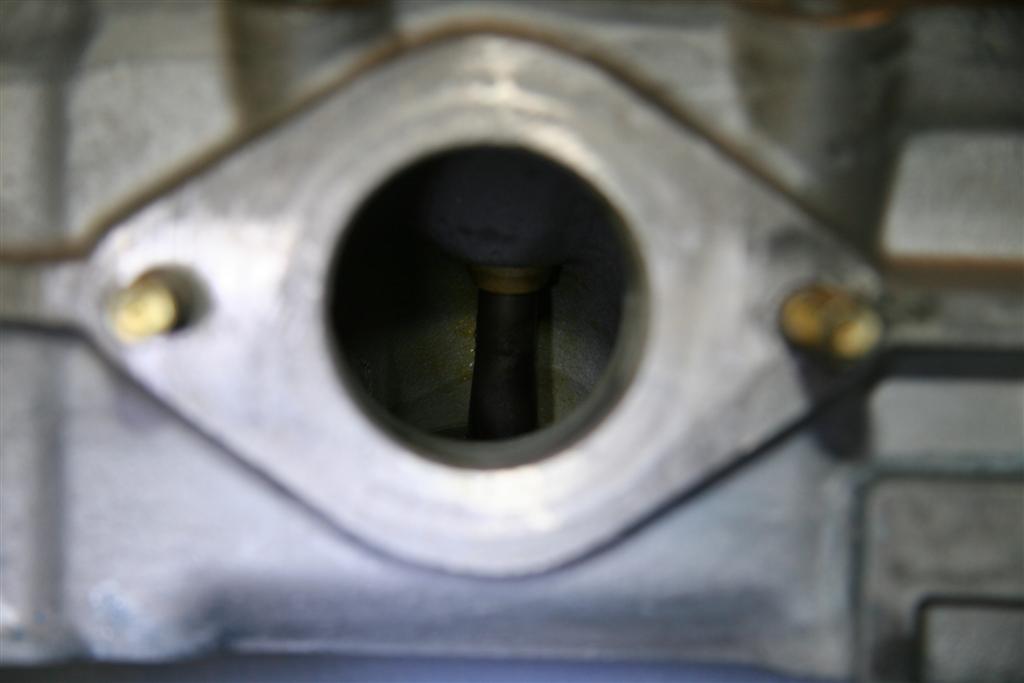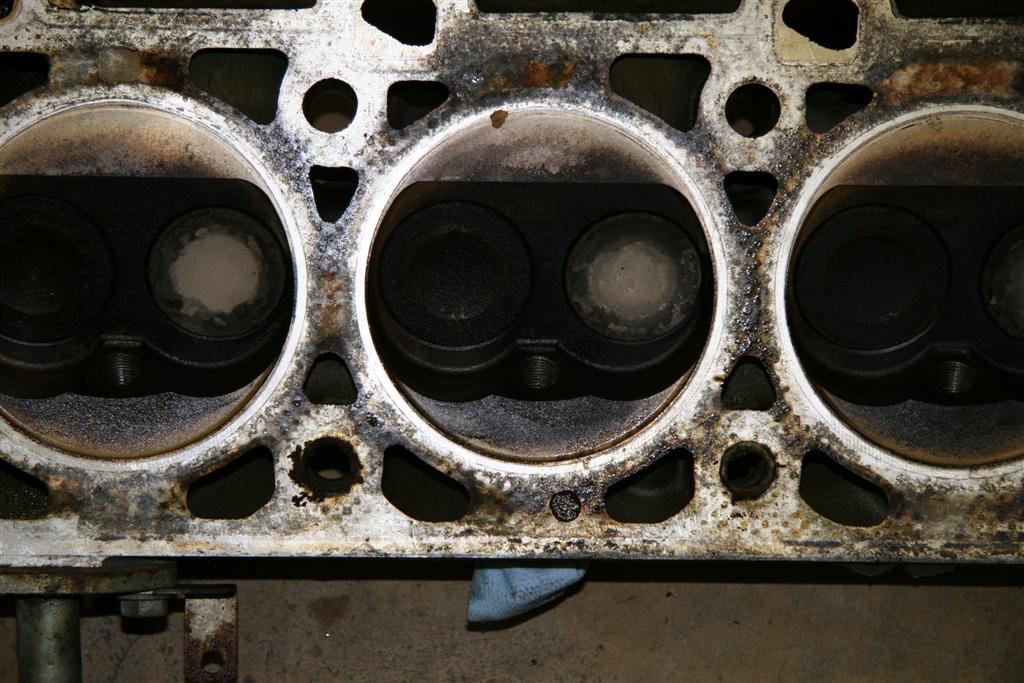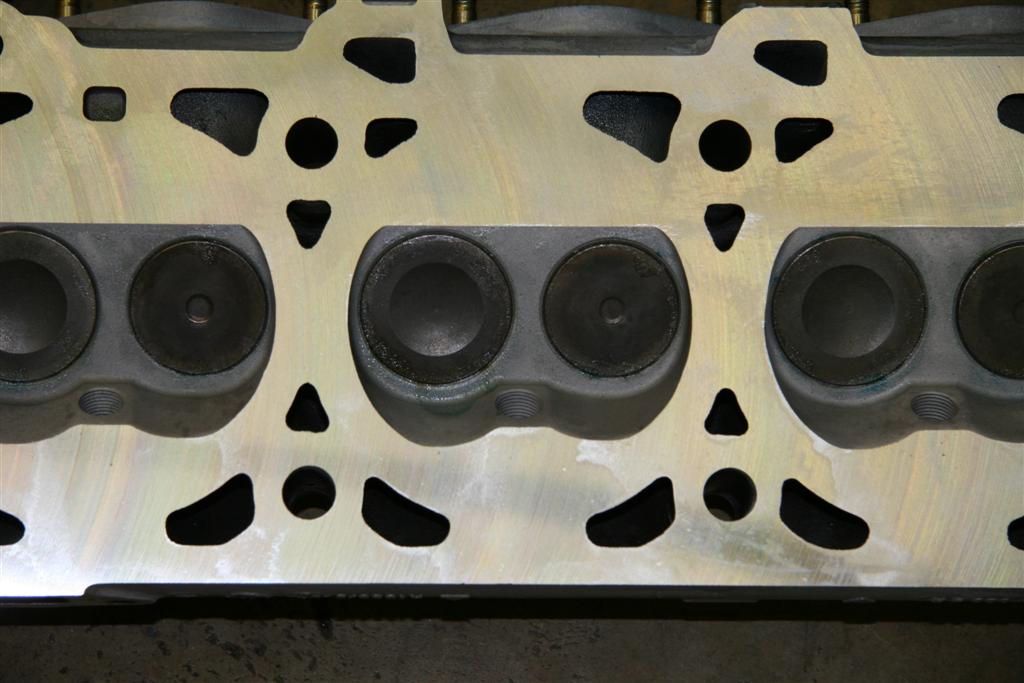RacerX wrote:
Don't tell me there's a bunch of different cams too!!!!
There are two spec legal cams:
Early - 155.05
Late - 155.09
The intake profile, lobe centers, and lift are the same on both. The late cam just has slightly more duration on the exhaust profile. I honestly wouldn't expect much in the way of a perceivable difference using one vs. the other.
While I'm talking about motor differences and this thread has gone way off topic, lets look at the other differences:
Here are the picks I have comparing the intake and exhaust ports:
Intake:
6R head - Notice the pocket at the bottom.
8R head
Exhaust:
6R head - Notice the light gray area: that's the exhaust pocket.
8R head
Sorry the pics for the 6R head are so dark, but you can tell that there is much more port material on both sides of the 6R head.
Here's some shots of a stock thickness head vs. a head shaved to minimum thickness for low compression pistons:
Head removed: 24.15mm
New head: 22.68mm
The mating surface for all the heads look pretty much the same. The thing to notice is that when shaved to minimums, the depressed area that mirrors the piston bore is eliminated, changing the shape of the chamber.
So the question becomes is this good or bad? In my opinion it is a positive. These aren't the most advanced heads. They are simple 2 valve heads with a old school wedge combustion chamber design (nope, no hemi's in these cars). Compared to modern heads, there is very little to cause swirl and promote fuel and air mixing. Just for reference, modern heads are usually a modified hemi design. They have more of a kidney bean shape with ridges between the valves to promote turbulence. The valve combustion area also is usually smaller than the diameter of the cylinder bore. The flat parts of the head that covers the bore creates an area called the quench area. This is where the piston gets very close to the cylinder head surface. Reducing the space between the piston and the head causes the air to get squished into the combustion area more rapidly. This promotes turbulence which in turn mixes the air and fuel better. The faster moving air also cools the edges of the head's combustion chamber reducing the likelihood of pre-detonation or knocking.
So increasing the quench area is a good thing on these heads. It promotes better A/F mixture and reduces the chance of detonation, which is good since we are raising compression.
The other thing that can effect the effectiveness of this quench area is the shape of the piston. Here are what each of the pistons look like:
Low Compression - 9.5:1 Piston (83-87)
High Compression - 10.2:1 Piston (88)
As you can see, the tops of both pistons are very flat with the only difference being the dish in the piston itself. The flat edges on the low compression piston will work well with the new tighter quench area to promote the benefits listed above.
Thus, in some ways the minimum thickness low compression piston configuration is superior to the stock 88 high compression configuration.
So what does all this mean? It means that a low compression piston motor with a minimum thickness head should perform at least as well as an 88 high compression piston motor (assuming that the late head and cam are used with the low compression piston motor).
The one gotcha in all of this is the cam timing. Using a minimum thickness heads makes it impossible to set the cam timing to TDC. It must be retarded by a few degrees or advanced by a slightly larger margin. I don't know without dyno testing, if either of these are advantageous or not.
If we really want to be able to equalize the performance, or at least give all motors the chance to make the same peak horsepower, we need to allow for adjustable timing gears. I know I previously posted that I had no position on this issue, but after pondering it further, I have taken a side.
Now, an alternative to using completely adjustable gears would be allowing for modification to the stock gear to bring the cam back to stock timing. This modification would involve having a new key hole cut in the gear to return them to stock timing when installed on a minimum thickness head. I think this could be done for around $100.
Here's how I would amend the rules:
1. Require stock timing on all cars
2. Cars with head thickness below the factory specified minimum thickness (not rules thickness for this definition) would be required to run the modified cam gear.
3. Have a specified supplier for the modified gears, to keep from allowing "cheater" gears.
4. Allow 1-2 seasons for compliance.
This should equalize the performance potential for all motors while controlling costs and eliminate the need for dyno tuning. It would also allow you to run the stock low compression motor with out modifications (although you may give up a few ponies).
Enforcement would be simple:
The gear could have 3 clearly marked settings. 1. Stock, 2. LC Piston & < Stock Thickness, 3. HC Pistons & < Stock Thickness (Not sure the last setting would be needed. I need to compare the HC minimum thickness to factory minimums.)
A steward would measure the installed head thickness. Based on the measurement and pistons installed, a particular setting would be required. The markings for the setting could be made on the gear so they are visible through the cam gear TDC inspection window.
What do you guys think?
-bj










